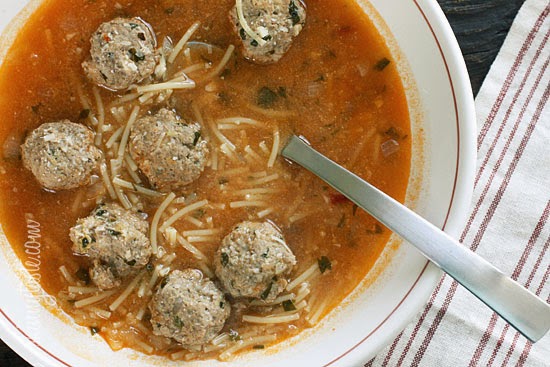“A great person attracts great people and knows how to hold them together.”
- Johann Wolfgang Von Goethe
Shared posts
Hold Them Together
A.Nlike by holding sunday dinners
Confirmed: Tipping Is a Terrible Way to Pay People
Jimmie Luthuli, 34, has worked as a waitress all over Washington. She's fetched drinks on U Street, wiped down tables on Barracks Row, and taken orders on K Street. The scenery changed but her pay didn't: $2.77 an hour before tips.
Those meager wages were typically swallowed up by taxes, she said, leaving her to subsist on an unsteady income of tips. "Sometimes I would only get one table the whole five-hour lunch shift and then that table would leave me $5, and that would basically be my pay for the day," Luthuli told me over her lunch break on Wednesday. "I was coming home with only $80 or $100 for a whole week of work."
In 2009, the federal government raised the minimum wage to $7.25 per hour—but, under lobbying pressure from the restaurant industry, it did nothing for the many thousands of people who work for gratuities. Under a lesser-known subsection of the minimum-wage law known as the "tipped minimum wage," service workers may be paid as little as $2.13 an hour. Another lesser-known fact: That wage has been stagnant for the past 23 years.
While some states and D.C. have made modest increases to the tipped minimum wage on their own (modest in the District's case being 64 cents), and eight states have no tipped minimum wage at all, about half of all states continue to pay workers just $2.13 an hour, provided employers make up the difference if a server fails to achieve the standard minimum wage after tips. It's a particularly troubling statistic for women who make up two-thirds of tipped workers nationally and are regularly—some would say systematically—paid less than men.
A new analysis by the National Women's Law Center found that in the eight "equal treatment" states where tipped workers are entitled to be paid the full federal minimum wage by their employers ($7.25), the wage gap between men and women is smaller, and poverty rates among tipped workers (particularly women) are lower than in states where tipped workers make a base wage of just $2.13 an hour. More specifically, the average wage gap is 17 percent smaller for women overall working full time; the average poverty rate for female tipped workers is 33 percent lower.
The analysis, which drew data from the Census Bureau's recent American Community Surveys, also emphasized that the situation is especially bad for people of color. In states with a tipped minimum wage of $2.13 per hour, African-American women working full time, year round are paid on average just 60 cents for every dollar earned by their white male counterparts (a wage gap of 40 cents). In "equal treatment states," the wage gap drops to 33 cents. Hispanic women fare worst of all, earning just 51 cents on the white male dollar in the former (wage gap: 49 cents) and 53 cents on the white male dollar in the latter (wage gap: 47 cents).
"What was striking to me was the variety of ways in which the inequality that's associated with the existence of this large tip credit manifests itself," said Katherine Gallagher Robbins, a senior policy analyst at NWLC and coauthor of the report. "We see repeatedly, no matter how you slice the data, workers in these states are doing worse." Her coauthor, NWLC's Julie Vogtman, said she was struck by extent to which the effects of a low cash wage for tipped workers "radiated out" to affect the wider wage gap in these states.
Industry groups have argued that the $2.13 base wage is a misnomer. Every tipped worker is guaranteed at least the minimum wage of their state, after all. And it's the employer's legal responsibility to make up the difference between the tipped minimum cash wage and the regular minimum wage, if a server's tips fall short. The trouble is, whether employers are deliberately dodging this requirement or are simply held back by logistics, many workers never see that money at all.
A recently released report from the Economic Policy Institute underscores the problem. In the most recent compliance sweep of full-service restaurants by the U.S. Labor Department's Wage and Hour Division, 83.8 percent of investigated restaurants had some type of violation. "In total, WHD recovered $56.8 million in back wages for nearly 82,000 workers and assessed $2.5 million in civil money penalties," the Labor Department reported. "Violations included 1,170 tip credit infractions that resulted in nearly $5.5 million in back wages."
The latest NWLC analysis comes as the Senate eyes a new vote on a minimum-wage bill that would increase the regular federal minimum wage from $7.25 to $10.10. The bill would also reestablish the link between the tipped and the regular minimum wages, raising the former to 70 percent of the latter within six years. Senate Majority Leader Harry Reid's office has been coy on timing, but people well sourced in the matter say the proposal could come up for a vote as soon as next week.
The minimum-wage bill isn't everything advocates are hoping for, but it would certainly improve the situation for tipped workers, adding greater stability to their income and boosting their total pay. In a conversation Wednesday, NWLC's Vogtman called it a "very important step in the right direction."
Luthuli, for her part, isn't waiting around to see how it goes. She's channeled her frustration by volunteering with the Restaurant Opportunities Center, an advocacy group that, according to organizers, is working on legislation to eliminate the tipped minimum wage in eight states. She's also working odd jobs to pay the bills, including some freelance consulting and four shifts per week as a food runner at a restaurant on U street.
"I decided it's better to be a food runner than a server," she said. "It only pays around $6 an hour, but I like it because at least I know my hourly wages. For me it comes out to more money."
This article was originally published at http://www.nationaljournal.com/next-america/economic-empowerment/why-you-should-always-tip-your-waitress-20140904
If Not D.A.R.E., Then What?
I grew up in the 1990s, the era of mandatory D.A.R.E. and Just Say No. Local law enforcement stepped inside the classroom to instruct us kids, their message clear: "All drugs are bad."
My dad, Dr. Charles Grob, one of the country’s leading clinical researchers studying the potential benefits of psychedelic-assisted therapy, didn’t agree. As the director of child and adolescent psychiatry at Harbor-UCLA Medical Center, and with the approval of the Food and Drug Administration and the Drug Enforcement Administration, he’s led several investigative studies of drugs branded by D.A.R.E. in my youth as “bad,” including MDMA (“Ecstasy” or “Molly”), psilocybin (“shrooms”), and ayahuasca.
His colleagues—many of whom I’ve known since I was very young—have added marijuana, ketamine, ibogaine, and even LSD to their impressive roster of studies as well. Investigation of these substances had previously been shuttered, thanks in large part to Timothy Leary’s Pied Piperism during the 1960s, but the 90s initiated a renaissance of government-sanctioned psychedelic research that continues to this day.
The results of recent studies have been positive. Take psilocybin, for instance. In studies positing that psilocybin can reduce anxiety for end-stage cancer patients, ease the symptoms of obsessive-compulsive disorder, and treat alcohol abuse, the data is encouraging. Psilocybin, if used appropriately, could be a viable medicine. Or, consider MDMA. Dr. Michael Mithoefer’s study using MDMA-assisted therapy to treat individuals suffering from PTSD found reduced symptoms in 83 percent of subjects in the active treatment group, versus 25 percent of subjects in the control group. The pilot study’s success has led to approvals for a new follow-up study treating military veterans suffering from PTSD.
There are a variety of takeaways from these studies, but one is clear and consistent: Many of those “bad” drugs aren’t always bad.
I grew up on the fringes of psychedelia. My dad and I never drove a Winnebago to Burning Man (though we were invited to do so). And he’s not a hippie. He wears a tie, not tie-dye, to work, and is impressively risk-averse, advocating safety and harm reduction above all. But despite his conservatism and determination to disprove the cultural stereotype that “drug research” must be shorthand for personal recreational use, it’s only recently that his work, though completely legal, has been met with interest rather than skepticism by the mainstream. As a child I watched him flourish in a community of his peers, but worried what other kids in my school—and my D.A.R.E. officer—might think if they learned what my father did for a living.
I had my own supplemental drug education experience, my other D.A.R.E.
My family made the regular pilgrimage to a bohemian oasis called Asilomar for the Association for Transpersonal Psychology’s annual conference. There, adults watched slideshow presentations that explored the inner dimensions of the human brain while us kids explored nature—hiking, stargazing, and building stone dams in a nearby creek. As a teenager, I accompanied my dad to book signings, conventions organized by the Drug Policy Alliance (DPA) and Students for Sensible Drug Policy, and The Psychedelic Salon, a Friday night speaker series in a homey Venice Beach bungalow, where people promoted a more expansive conversation around drugs. Everyone everywhere told me that my dad was “so cool.”
I agreed with them. My dad was cool because he respected me. He and my mom started talking to me about drugs when I was very young, and supplied me with all the facts they knew.
I memorized the chemical name for MDMA at age eight—3,4-methylenedioxymethamphetamine—and I’ll never forget it. I knew about the problem of rampant drug substitution, and that kids who thought they were buying one thing could very well end up with something else. I understood that when my dad and other researchers emphasized the value of “set and setting,” what they were really saying was “doing drugs at a party, with other drug novices, where risk of dangerous drug combinations is high, is pretty damn stupid.” No scare tactics were needed; the plain facts my dad gave me scared me enough.
My parents taught me that certain otherwise illicit substances had value as medicines in beta-testing, and I decided for myself that recreational use could damage the long-term goals of the therapy-assisted movement. I trusted that my parents told me the truth, and in turn, my parents trusted me to make smart decisions.
Yes, I was a kid with zero medical background. And yes, I was repeating back what my parents preached. But this was the school of thought they raised me on, just as my classmates learned lessons from their parents. We were just taught to believe different things.
The open dialogue at home clashed considerably with D.A.R.E.’s straight and narrow instruction at school. My dad, along with fellow parents who worked in his field, eschewed “Just Say No” for a comparatively holistic motto: “Just Say Know.” For them, the drug question requires a more nuanced answer than the word “no” can allow. To be sure, the slogan’s blanket villainization of drugs undermined their lifelong work, but its fear-driven simplicity also caused problems for the kids it meant to guide.
“The messaging since 1983 has been fairly consistent,” says Dr. Marsha Rosenbaum, director emerita of the DPA’s San Francisco office. “‘Drugs are bad and use equals abuse.’” The problem, she says, is that this model contains “no harm reduction component. There’s no ‘if you choose to do this, not that you should, but if you do, here’s what you should know.’ There’s no Plan B. There’s no fallback strategy.” Rosenbaum penned an educational booklet geared towards parents called Safety First that offers a “reality-based approach” to drug education. A new edition is due out in September. “We’ve got to tell the truth,” Rosenbaum writes. “Because if we don’t, teenagers will not consider us credible sources of information.”
It’s hard to recall exactly what we learned in D.A.R.E. I remember that my class’s police officer wore shorts as part of his uniform everyday, taught us that marijuana causes holes in the brain, and one day restrained a kid named Tommy, who jokingly lunged for his gun holster. Nothing invokes fear of the law like an armed police officer handcuffing your sixth-grade classmate. Otherwise, my drug education experience was utterly forgettable.
In 2001, the United States Surgeon General issued a statement on D.A.R.E. declaring that, “children who participate are as likely to use drugs as those who do not participate,” and categorized what was once the mainstay of federally funded drug education as an “ineffective primary prevention program.” Funding, however, remained in effect throughout the 2000s, with President Bush promoting the position of “Drug Czar” to Cabinet-level status. President Obama demoted the position to non-Cabinet level status in 2009, a move that both reflected the changing landscape of public opinion on drug policy, and coincided with substantial cuts to D.A.R.E.’s federal budget.
“D.A.R.E. [currently] receives zero federal funding,” says Ron Brogan, northeast representative for D.A.R.E. America. “The past five years we lost all federal funding, as funds for prevention have been cut across the board.”
In 2012, D.A.R.E. replaced its “Just Say No” slogan with “Keepin’ It REAL.” “REAL” is an acronym for “Refuse, Explain, Avoid, and Leave.” The new program’s efficacy is currently under internal evaluation, with its elementary school program midway through a five-year longitudinal study, and a high school program in development. The curriculum now, Brogan says, is “more about making good decisions than [discussing] specific drugs.”
Brogan maintains that the recent shift was not a response to the Surgeon General’s 2001 report: “We tend not to respond directly to critics, but rather keep up with the current science involved.” When researchers Dr. Richard Clayton and Dr. Christopher Ringwalt published studies in the 1990s that “came out in the press as very negative criticism of D.A.R.E.,” says Brogan, D.A.R.E. listened, and ultimately invited both scientists onto D.A.R.E.’s advisory board. “Prevention evolves over time, and D.A.R.E. tries to keep up with current trends and recommendations.”
The current trend toward marijuana legalization, however, is somewhat of a complicated issue for D.A.R.E. “We are unalterably opposed,” says Brogan of the recent law passages in Washington and Colorado. “Suffice it to say, we are an abstinence program.” In response to the question of whether D.A.R.E. adheres to its original messaging that all drug use is drug abuse, Brogan offered no comment.
D.A.R.E.’s website reflects some of the ambivalence of an organization at a crossroads, caught between a broad-based mission statement (“Teaching students good decision-making skills to help them lead safe and healthy lives”), changing times, and conflicting viewpoints. It features an article both recognizing medical marijuana’s legitimacy and voicing concern that “despite the known benefits of marijuana in easing patient pain—and the potential revenue that sales could generate for hospitals … hospitals run the risk of violating federal law.” But there’s also a piece by the CEO of the National Association for Drug Court Professionals (NADCP) on the site that stands decidedly against medical marijuana, using quotation marks around the words “safe” and “medicinal.”
In effect, D.A.R.E. no longer seems to offer a unified voice or philosophy, and the site serves more as a forum for instructors than a source of guided curriculum.
“Because it’s expensive and hasn’t proved effective, a lot of communities are backing away from D.A.R.E.,” says Rick Doblin, executive director of the Multidisciplinary Association for Psychedelic Studies (MAPS). “Still, D.A.R.E. is constantly changing [its] model and saying, ‘Now it works.’ Are they trying to learn? Or are they trying to immunize themselves to criticism?”
Despite D.A.R.E.’s waning relevancy, no salient drug educational program has emerged on a national scale to fill the hole left by its downsizing. This is troubling to scientists who both disagree with D.A.R.E.’s abstinence-only messaging, and advocate prevention education. “To me, it’s a public health issue,” says Dr. Julie Holland, editor of The Pot Book and Ecstasy: A Complete Guide. “People do risky things and we need to teach them how not to do them.”
According to Dr. Stephen Ross, director of addiction psychiatry at New York University, much of the problem remains in the misallocation of federal funds. “Seventy percent of federal funding continues to go to enforcement,” says Ross. “Only 20 percent [goes] to treatment and 10 percent to prevention. … Why not 60 percent to prevention and 40 percent to treatment?”
One prevention approach currently finding traction in psychotherapy is motivational interviewing (MI), “a collaborative, goal-oriented method of communication with particular attention to the language of change.” The National Institute on Drug Abuse (NIDA) has supported studies investigating MI’s efficacy in substance abuse prevention, and has circulated literature to clinical supervisors and therapists. But the technique has yet to make a strong foothold in the public school system. A recent one-year follow-up study “failed to demonstrate that an adequately implemented MI booster was of incremental value.”
In the absence of widespread, effective, federally-funded drug education, the onus has fallen largely on parents to spearhead drug education reform, says Doblin. “The parent movement of the 1980s led to Nancy Reagan, and Just Say No, and D.A.R.E., and D.A.R.E. led to misinformation. What we don’t really have yet is a new parent movement.”
There may not be an imminent large-scale movement as Doblin prescribes, but there is a small one, one that foregoes the zero tolerance model—bolstered by D.A.R.E.’s police officer instructor base—that focuses on enforcement and discipline, and remains prevalent in mainstream secondary school policy.
This school-based program rejecting the “first-strike-you’re-out” rhetoric is UpFront, which works with at-risk kids in California.
“These kids all know the truth, so why lie?” says Chuck Ries, founder of UpFront, a student assistance program. First established at Oakland High School in 1997, UpFront advocates candid conversations—talking about harm reduction in a safe environment. “Once [the students] realized we were legit, not cops, the kids who were normally marginalized suddenly became the experts in the room. They got to share hard fought knowledge in a way that was accepted by the group.” Many of those same experts went on to become paid instructors in UpFront themselves, alongside licensed therapists hired by Ries.
But the stock market crash of 2008 and the building of a new local health clinic that required the resources normally allocated to UpFront ultimately moved the program out of Oakland High School and into a consulting firm operating on a contractual basis.
“If money were available it’d be easy to find schools willing to participate,” Ries says. “The schools want these programs. The students want these programs. But it’s a different story when the schools are responsible for funding the programs themselves.”
Rosenbaum and the DPA agree. “Student assistance programs like Chuck’s are an invaluable resource. If you could have that in every school, we’d be taken care of.”
The common thread among effective programs, it seems, is honesty.
“Isn’t it interesting,” says my dad, a.k.a. Dr. Grob, “how all these kids of my colleagues—leading figures in the research wing of the drug culture movement—how these kids are completely straight? That none of you guys are into drugs? That says something.”
Past modes of drug education have opted to emphasize the risk and minimize the possibility of medicinal benefits. But saying “this is what we know” is not an invitation for recklessness—it establishes trust and communication.
Drugs were never objects of titillation for me. They were never branded as taboo, so I never sought out that forbidden fruit. Still, I grew up in the real world. I faced many hard choices head-on. But because my dad provided me with accurate information, and framed that information in a medical context, I learned the boundaries without needing to personally test them. And although I am what my dad and his colleagues refer to as “drug naïve,” I felt equipped with the right tools to both counsel friends recovering from bad trips, and offer advice to friends who, in my mind, were planning risky experimentation. My dad recently reminded me of an episode in high school where I successfully dissuaded a friend from picking some desert-growing jimson weed, boiling it as a tea, and drinking it. I warned him that the likelihood of disorientation and hypertension were high, and that he could seriously injure himself or others as a result. And he listened to me.
One Way to Cut Back on Expensive Ambulance Rides
When they get a call for medical help, most fire departments scramble both an ambulance and a fully-staffed fire truck. But that’s way more than many people really need, says Rick Lewis, chief of emergency medical services at South Metro Fire Rescue Authority in the Denver suburbs.
“It's not the prairie and the old West anymore, where you have to be missing a limb to go to the hospital. Now it's a sore throat, or one day of cold or flu season sometimes, and that can be frustrating for people, I know it is.”
It's frustrating for both ambulance crews and patients. Somebody who’s been running a fever for a couple of days needs help, but not necessarily an ambulance ride to the emergency room.
Ambulance crews aren’t required to transport everyone who calls, but Lewis says crews fear lawsuits if they were to leave and a patient got worse. Also, ambulance companies typically don’t get paid unless they take somebody to the hospital. So Lewis teamed up with Mark Prather, an emergency-room doctor, to come up with a better way.
“We created a mobile care unit that can go to a given patient, if we think they're safe to treat on scene, and provide definitive on-scene treatment,” says Prather.
The "mobile care unit" is, basically, a station wagon. Advance-practice paramedic Eric Bleeker shows off some of the gear. “This one is a suture set, so it has everything for wound closure, from staples to regular sutures,” he says.
Ambulances don't have that. So, even someone with a small cut that just needs a quick couple of stitches? They get a ride to the emergency department.
While several cities across the country have started using paramedics as physician extenders, sending ambulance crews to do routine things like hospital follow-up visits in places where basic health care is hard to get, South Metro’s model focuses on responding to calls. The team always includes at least one nurse practitioner, so they can carry and prescribe basic medicines.
“A lot of what we do is sort of that mid-level between the acute care you receive in an emergency department and what the paramedics can currently do,” says Bleeker. It's kind of like an urgent-care clinic on wheels.
There’s also a miniature medical lab.
“We can run full blood chemistry, we can do complete blood counts, we can check for strep throat, we can check for influenza,” he says. Those are capabilities that even many doctors’ offices don't have on site.
That person who called 911 because they were running a fever could end up being diagnosed and treated in their living room by South Metro's station wagon for about $500, says South Metro Chief Lewis. He estimates similar care in an emergency room could cost six or seven times that.
South Metro Fire's new service also relies heavily on Colorado's new electronic medical records network. The nurse or EMT can call up patient records on the scene to provide care that’s more like an office visit, and dispatchers can check recent medical histories to make sure they send ambulances to people who might really need one.

"Mobile Care Unit" (Eric Whitney)
Mark Prather, the doctor who helped come up with this new treatment model, would like to see it spread. But so far, insurance companies don’t pay for it.
“Yeah, and that's maybe why nobody has done it yet,” he says, laughing.
For the last nine months South Metro has been running the sub-ambulance service without getting paid for it, to prove that it works. But Prather thinks that's about to change because of the Affordable Care Act. The law aims to get insurance companies and government programs like Medicare and Medicaid to stop paying for too much medical care. And healthcare providers who contribute to overuse of emergency rooms could be penalized.
“It allowed us to think about payment differently, and basically switch from a volume situation to a quality situation,” he says.
But it's not like the law just flips a switch and starts paying for appropriate care instead of rewarding providers who see a high number of patients and do lots of procedures. The change to reward efficient, appropriate health care is just starting to happen. Slowly. But Prather is now in talks with several big healthcare payers and hopes to be making money soon.
This post appears courtesy of Kaiser Health News.
This article was originally published at http://www.theatlantic.com/health/archive/2014/09/replacing-an-ambulance-with-a-station-wagon/380070/
When Dude-Bro Pranksters Punk the Police
In Clearwater, Florida, there are a few friends who go around with a video camera filming innocent pranks to amuse themselves and fans of their growing YouTube channel. Their aesthetic is surfer dude. Their sense of humor is late high school, early college. One prank consisted of sending a costumed fancy man on stilts to walk around at the beach. In another, they approach a stranger with the pickup line, "On a scale of America to North Korea how free are you tonight?" In a third, they go to a dog park with a stereo and blast the song, "Who Let the Dogs Out?" On a scale of Andorra to North Korea they are about as harmless as Denmark.*
One day they deployed their kid brothers, 15 and 16 years old respectively, to walk around at a crowded Florida beach area with the kind of novelty mugs that appear to be full of sudsy beer but are actually empty. The entire joke is the visual of these obviously underage kids walking around with what looks like beer. Very quickly, a police officer calls them over. They capture the whole scene on hidden video:
What makes this interesting is the dramatic difference in the reaction of the two police officers. The first one to confront the kids is momentarily tricked into thinking they have beer, but very quickly realizes that it was just a prank. At that point, she could have just laughed it off and let them go. Or she could've affected a friendly demeanor, smiled, and said, "Very funny guys. You got me. I know you're just trying to pull a harmless prank, but anytime you distract a police officer like this for a laugh, we're not able to be on the lookout for real bad guys, so I'd appreciate it if you don't do this again, okay?" Or even, "Come on, guys, I don't want little kids at the beach to think that the cool older teenagers are walking round with beer." It would've been easy to express even the squarest of concerns.
Instead, the police officer isn't merely humorless. She is needlessly hostile and unprofessional. What kind of adult castigates a 15-year-old for walking around without identification? What kind of adult calls a couple of high school students "retards"? Is running the identities of these kids possibly the best use of her time? That hypothetical lecture about distracting police officers from important duties is impossible to deliver once you've spent so much on-duty time unraveling a novelty mug caper. How much petty theft happened on that beach in the meantime (or how many lost tourists weren't given the directions they needed)?
As if to highlight the needless hostility in the first police officer's approach, a second police officer comes over, reacts like a normal person, and charms the teens with friendliness. They would've been receptive to any gentle reprimand he then delivered... but he walked off. If I had to write a thought bubble for him it would be, "OMG I can't handle my absurd colleague, I gotta get away from her now."
Says the first officer, who has already called the kid a retard, "My guess is you don't stay in school." Because novelty beer mug pranks are associated with dropping out?
Says officer two, "I guess you guys were the class clowns in school." Yes. Obviously. And not the kind of class clown that the principal really wants to expel—the kind that the principal can't help but like, because they're obviously goodhearted.
Finally, a third police officer arrives on the scene, totally fabricates smelling marijuana, and weirdly tries to intimidate the kids into admitting they have weed in their pockets by implying that if they just admit it he won't arrest them. (Police are allowed to blatantly lie.) Of course, they obviously don't have marijuana—as the video notes, who pranks the police while carrying illegal drugs in their pockets?
This is obviously more lighthearted than the other videos of police officers we've recently reviewed in this space. There's no danger or violence (perhaps in part because these are white kids in an affluent area—three black kids in their late teens would know damned well that they'd better not even attempt a prank like this one). But there's still a serious point to be made about effective policing. Police officers number one and three left these kids—and unbeknownst to them, their many YouTube followers—with the impression that law enforcement is needlessly hostile, petty, and humorless. They fit every negative stereotype of police officers save knee-jerk violence, and exactly none of the normal excuses applied. They faced no danger. They were not dealing with hardened criminals. They just chose to be jerks, needlessly. Whereas officer number two left them with the impression that police are friendly, goodhearted people that one might voluntarily assist and trust.
Interactions like this could affect the attitude that these kids have toward the police for their entire lives, and should shape the public's perceptions in subtle but important ways. Officers one and three damaged their profession with their behavior, especially when the video made the local TV news. Who wants their community policed by folks who react to teen pranks with f-bombs, "retard" insults, and evidence free accusations that they're drop-out potheads? Kudos to the several police officers who react reasonably to these kids in the course of their videos, and the chief in Clearwater for reacting appropriately when the video came out: he didn't take himself too seriously, noted that in fairness the kids baited the female officer, apologized for her behavior, and put a letter of reprimand in her file.
That sounds about right to me.
*There are a few pickup-line pranks that are too crude for my taste. Even Denmark isn't perfect.
This article was originally published at http://www.theatlantic.com/national/archive/2014/09/when-surfer-dude-pranksters-meet-the-police/380016/
Stinginess of the Day: Philadelphia Eagles Running Back LeSean McCoy Tips .03% on a $60 Tab
The owner of the restaurant offered a statement, via Business Insider:
I would like to address the LeSean McCoy tipping situation and our role in it.
For starters, I take total and complete responsibility for sharing this receipt. It was not our server's decision, it was mine. I am to blame.
I decided to take action after some serious thought. And while I'd like to apologize to Mr McCoy, I cannot in good conscience do so. I stand by my actions one hundred percent.
Mr McCoy and his three companions came into my place on Monday afternoon, and immediately the whole staff was excited. Mr McCoy is a skilled athlete and is one of our beloved Philadelphia Eagles. A true Philly legend and a sports hero. Understandably my staff was really pumped, especially on the heels of they terrific win the day before. (Go Eagles!).
Mr McCoy and his friend sat inside at a booth next to my management and next to me. They were given excellent service. Impeccable service. If anything, our server was a little nervous as was our food runner, because they are big, big fans.
He and his group, from the moment they sat down, were verbally abusive to our staff in the most insulting ways. The derogatory statements about women and their sheer contempt for the staff serving them wasn't the end, however. After Mr McCoy and his group left I looked over and saw their server, my friend, with his head bowed down and with a very confused look on his face. I took the receipt out of his hand and I couldn't believe that anyone could be so callous. Mr McCoy had left a .03% tip for our staff. Our staff that was beyond excited to see him walk into our burger joint and was excited to serve him. That's twenty cents on a tab of over $60. Twenty cents that our server has to split with the food runner and the bartender. Two dimes from an insulting multimillionaire.
I bet Mr McCoy is usually an awesome dude. And everyone has their bad days. But I'm from Philly and have had the pleasure of meeting many of our bad ass sports heroes. Ron Jaworski I met as a kid and I love. Iverson I loved. Mike Schmidt! You name 'em. I love all of our athletes past and present. Hometown heroes who treat those below them with some respect. And maybe Mr McCoy was having a "bad day" after his big victory all that, but the reports of him receiving "bad service" is a complete slanderous lie, and my crew here is better than that and deserves better than that.
At the end of the day, I did what I felt my heart told me to do. And I don't want anything from Mr McCoy, but...maybe an apology to his server who gave him excellent service would be cool.
Again, I am the owner and I take full responsibility for my actions. Eagles fans, I feel ya. Id be pissed too. But a man's gotta do what a man's gotta do and stick up for his friends.
Hate mail should be directed to tommy@pytburger.com. I will respond to you right after I catch up on this mornings hate mail.
Submitted by: (via Business Insider)
Skinny Garlic Parmesan Fries
These delicious fries are baked in the oven with garlic, a little olive oil, kosher salt and black pepper, then sprinkled with freshly grated Parmesan and parsley – to die for!
Inspired by a night out with friends, my girlfriend ordered something very similar although fully fried and I couldn't stop eating them – I knew I had to make them at home!
Yesterday I set out to see if I can recreate them, and luckily I had a houseful of people who helped me taste test them. BIG HIT with everyone in my house!! You don't miss the fact that they are not fried at all, and the garlic smells amazing while it's baking in the oven. I listed them here as 1 serving which is basically one potato per person, but you could share them if you were serving them as a side.
I made two batches and baked them on two baking sheets because the key to making them crisp is to make sure they all lay flay on the baking sheet, you don't want to crowd the pan.
To cut them, I used my mandolin and sliced them into 1/4-inch thick slices. Then I took a knife and sliced them into 1/4 inch thin strips. If you cut them thicker you'll have to adjust the cooking time. Next time I may try my paderno slicer and see how they work out spiralized.
And for those of you who are scared of potatoes, I just want to remind you potatoes are good for you! They are rich in fiber, potassium and magnesium, which are all listed as shortfall nutrients in the American diet. Plus, they are naturally gluten free and part of a clean eating diet!
Click Here To See The Full Recipe...
DiGiorno Pizza Makes a Colossal Gaffe and Accidentally Promotes Domestic Abuse-Flavored Pie
The tweet in question? Here is a screencap of the quickly-deleted message, from Christina Coleman's twitter feed:

This week, survivors of domestic abuse started a pair of hashtags, #WhyIStayed and #WhyILeft, to educate others on the realities of domestic abuse and empower those within harmful relationships. In light of football player Ray Rice's recently-uncovered tapes his subsequent suspension, these words are that much more powerful.
Of course, that's not what DiGiorno thought the hashtag was about, and in their attempt to stay on top of trends on Twitter threw this into the public eye without a care in the world. As you can see, DiGiorno has since apologized for their ignorance. Just another warning message to #Brands on #SocialMedia, right?
Submitted by: (via DiGiornoPizza)
We've All Been There: The Son of a Secret Service Agent Gloriously Faceplants on the President's Couch
50 Light and Healthy Soup Recipes
Here's a great roundup of 50 easy, healthy, low-calorie soup recipes made with real food!
Here in NY we're expecting a blizzard of the century! I can't think of a better way to keep warm than with a bowl of soup! Here's a roundup of some of my most popular soup recipes, most of them are freezer friendly and make great leftovers! Enjoy!
Crock Pot Minestrone Soup – the BEST Minestrone soup recipe you'll ever try!
Turkey Meatball Spinach Tortellini Soup is an easy, kid-friendly soup and a great way to warm up on a cold winter night. One large bowl is under 300 calories and very satisfying...
Adaptive Pet of the Day: This Dog Broke Both of its Front Legs But Still Manages to Get Around in the Most Adorable Way
"Our dog broke both legs when she jumped off a 6 ft deck. She learned how to walk like this and cross the thresholds."
Submitted by: (via Jason Sanders)
Valerie Jarrett
From Esquire’s interview of Valerie Jarrett, Senior White House Advisor:
• If somebody’s trying to get you angry, the calmer you get, the angrier they’ll get.
• Just because you’re nervous doesn’t mean you have to look nervous. Nobody can look inside you. Project what you want to project.
• You can’t expect people to put your friendship on hold because you’re in a demanding job. Friends require investment. Like a garden, you have to water them. If you don’t, they dry up.
• You have to look at people in order to be able to read them.
• Anytime I was hesitant about taking a chance, my grandmother would say, “Valerie, put yourself in the path of lightning.
The post Valerie Jarrett appeared first on Mighty Girl.
Animal Surprise: The See-Through
A.NWant
Natalie Eve Garrett is an artist, writer and sea creature. Prints of her paintings are for sale here.
10 CommentsAlways Make Promises
Nicholas Epley recently made news when he paid commuters $5 to talk to a stranger on a Chicago train. The people were happier for having done it. But the point of his experiment was to shatter expectations. Most people presumed they would be happier sitting alone than talking to a stranger; but they were not. They also expected, on average, that fewer than half of their fellow passengers would be willing to talk with them. When people actually tried talking, though, no one was rebuffed.
Epley is a broad-shouldered professor of behavioral science at the University of Chicago Booth School of Business. He studies prosocial behavior in ways fascinating and a little unnervingly manipulative, of necessity. In a recent lecture he recounted that people tend to evaluate one another in two general dimensions: how interpersonally warm we seem to be, and how competent we seem to be. His latest work suggests that the way to deliver on both without going overboard on effort is to make promises.
In the journal Social Psychological and Personality Science, Epley and Ayelet Gneezy at University of California at San Diego perform three experiments that explain why promises can be helpful in business, and in limiting the burden of expectations in a world where enough is never enough and more is more. I spoke with Epley recently by phone about broken promises, and the importance of trust.
"You're late," he told me upon answering, exactly at 10:00 A.M.
That was the time I had on my calendar. I panicked, confused. "I'm so sorry."
Luckily it was just a joke, he explained, based on the nature of our interview. The ice broke all around us, and we sank into the frigid depths of pop psychology.
In Epley's latest social experiment, people were asked to consider a hypothetical scenario in which a friend had promised to give feedback on a paper. Either the friend did just as promised, gave really exceptional comments, or did less than they promised. "People were no more positive when someone did more than they said they would," Epley explained. "Breaking a promise seemed to hurt, but exceeding a promise didn't seem to help."
The same thing was true for remembered promises. The researchers asked people to recall promises kept, broken, and exceeded. People were less happy when someone broke a promise than when they kept it, but, again, exceeding the promise didn't create a big gain. At least, not one that was of the same magnitude as the damage of breaking a promise. "Breaking a promise was bad," Epley essentially reiterated. "Exceeding a promise? Meh. Not that much better than just keeping it."
Then in the pièce de résistance, part three, researchers made real promises to subjects in a lab, then broke those promises and evaluated the subjects' reactions.
"For a scientist, this was the most compelling demonstration, by far," Epley said, a staid appraisal of the thrill of a calculated lie for the greater good. To the researchers' knowledge, everything in prior psychology research had involved imagined or recalled promises. No one had actually created a laboratory experiment that manipulated promise keeping. "These promises may not have the ecological validity of a promise made out in the world, but they have the benefit of really happening, right there."
The experimenters gave subjects a set of 40 puzzles and told the subjects they would be paid on the basis of how many they completed. Then other people promised to help out by doing a certain number of the puzzles, pro bono. Some over and under-delivered on their promises. People were upset when the person didn't make good on their promise, but they were barely happier when the person over-delivered than when they did just what they said they would do.
I was surprised by how unimpressed people seem to be by that kind of unexpected boon. But Epley was surprised that I was surprised. He explained that there are actually a lot of findings of this kind in the psychological literature.
To make the point, Epley told me to think about an oil spill that kills a certain number of birds. I did, reluctantly. "How much should the oil company be fined?" he asked, rhetorically. "Well, if they killed 20,000 birds, they should obviously be fined more than if they killed only 2,000 birds. That's ten times more bird carnage." It's true; I did the math. But, he explained, if you ask people in experiments how much the oil company should be fined, and the people only see one of those numbers, the estimates are about the same.
"People are insensitive to the scope of the bird carnage when they evaluate only one number at a time. When you see that an oil company killed 2,000 birds, you don't think spontaneously, 'Oh, that's only one tenth of 20,000.'" It's just more than zero. "Everything else is just kind of gravy."
Distance operates like that, too. Think of the distance from your home to Saturn, and then think of the distance from your home to the next solar system. As Epley put it, "At some point, things just become 'far'—too big for us too handle." Scope insensitivity is a common phenomenon in psychology, and Epley believes that's what's happening here.
But, I asked, what about an employee who over-performs at a job? Doesn't that score more points with a boss than someone who just punches the clock?
"If I'm your boss and I expect you only to work Friday, and you come in Friday and Saturday, then I would evaluate you more favorably," he conceded. But that called up the critical difference between a promise and an expectation. His results are really about promises as interpersonal contracts. Expectations are in only one person's head, and they follow a relatively linear pattern. Less is worse, more is better. But promises have a peak at the level of fairness that is above and beyond the expectation point. That's called the fairness premium.
"If I think you're going to come in on Saturday, and you do, I'll feel fine about it. It's a little more than what you normally do. But if you, as an employee, promise your boss that you'll come in on Saturday and then you do come in on Saturday, I will actually be happier than if I just expected it. I don't get that fairness premium, that comes with a promise kept—that boost from recognizing you as a reliable and trustworthy person."
In that way, a promise is an action with moral implications. Keeping a promise is prosocial. "I've done what I said I would do," Epley explained. "Breaking a promise is kind of a selfish thing."
Does this pattern show up more generally across prosocial actions? "We're happy when people are kind to others, when they share, when they are good to us, and we're not happy when they are selfish," Epley explained. "Mother Teresa is lauded, Bernie Madoff is scorned." But the spectrum from purely selfish to purely prosocial behavior is huge. He posits this situation:
Imagine you're a kid with a cookie and a friend who has no cookie. What happens if you eat it all? Your friend will be upset. What happens if you give all of it away? Your friend will like you a lot. What if you give away half the cookie? Your friend will be just about as happy with you as if you gave him the whole thing. His satisfaction is a pretty flat line if you give anything more than half of the cookie. People judge actions that are on the selfish side of fairness. Maybe because we denigrate do-gooders, or because we're skeptical of too much selflessness, the research shows that, as Epley put it, "It just doesn't get any better than giving half of the cookie."
In one of his other recent experiments, people were asked to give donations at an orchestra concert. People who gave the "suggested donation" of $10 were judged by observers no more highly than people who gave twice as much. And in a scenario where there was no suggested donation, $5 was significantly more favorable than nothing, but $50 was no better than $5. That one is worth remembering if you're going for that benevolent-on-a-budget look this fall.
Before we parted, Epley said he would send me some of his other research papers. If I didn't hear from him by 3:00 P.M., I should email him. I asked if that was another experiment. He said no.
So, should we all make more promises? That way we can give people that fairness premium, gain trust, and always be sure that expectations of us are met? Knowing exactly what is expected of me, doing exactly that, and being lauded for it seems like some kind of dream.
"Well, promises are a risky strategy," he said, unexpectedly distancing himself. "Make the promises you can keep, but you don't need to exceed them. Just do what you say you'll do."
I got the email well before 3:00.
Nighttime In The Devil's Garden

It was early fall 2005 and I was driving cross-country in a station wagon I had impulsively bought from a woman in a department store parking lot in downtown Seattle. (What? She had the paperwork. It was fine.) I had given her most of my savings, so I decided, when possible, to car camp my way back home to New York City. In Moab, Utah, at dusty, red Arches National Park, I found a campground by the Colorado River. I would sleep in the shadow of the Fiery Furnaces, and I had even seen signs for something called the Devil’s Garden. I hadn’t meant to get Biblical. I just wanted to save some money.
It was right before sunset, and I parked my car and walked down to the river while there was still light. There were two golden, smiling children there, dipping their hands in the water; a long-haired girl in a cotton dress and a boy in a tidy t-shirt and shorts. Although they were quiet children, they seemed excited to see me, and, without saying very much at all they invited me to their camp. I followed them because those were the days I followed people without asking too many questions.
There I met the rest of the family – seven silent, dreamy children in total and their mother, also silent, and slender and weathered, and their father, a tall man in his fifties with long, gray hair. He was mostly toothless. He welcomed me, and motioned to a picnic table. It seemed impolite to say no. There was a mother and a father and seven beautiful children spending their time by the Colorado River. Why shouldn’t they be there? Why shouldn’t we all be there together?
All of the children had Biblical names. Their father told me that he had delivered them himself, without the help of doctors or hospitals or drugs because “you have to go through the pain to get to the beauty.” They moved around all year, living out of a blue van. The children were homeschooled. Whatever little money they made was through his preaching, which was done mainly on street corners, though he alluded to people who supported them in different cities.
Now it was night, and it was time for the family to eat. His wife, still silent, set the table around us. All of the food was soft in nature. (A nod to his toothlessness, I thought.) He offered me some of their dinner: tuna fish from a Tupperware container. Even if I bought cars in department store parking lots, and even if I followed small children down wooded paths, I still knew better than to accept tuna fish from strangers in national parks.
Soon it was bedtime, and the children disappeared and then rejoined us. They all clutched toothbrushes with great seriousness. I received a hug from each, and then they left with their mother. Then I listened to the man talk about God for a while. I like it when people talk about their faith with passion, even (or especially) if it has nothing to do with my own beliefs. I always learn something, even if it doesn’t turn out to be true or correct.
Finally, in the still air, with the river rushing next to us, he began to read his poetry to me. Much of it was about the end of the world, which was coming, very soon. An additional theme was how Colin Powell was the antichrist. Not metaphorically, but quite literally. When he was done reading his final poem he reiterated this fact, just to make sure I understood: Colin Powell was the antichrist. As I excused myself to my car I thought: At least these children will grow up with strong teeth.
That night, underneath a million gorgeous stars, I locked myself in my car. Just wait till the first crack of sunlight, I told myself, and then you drive. The morning licked at the night sky, and I woke. I crawled out of the trunk, squatted, and peed quietly in the parking lot. Then I got back in the car and started it. When I turned on the lights I looked up and my heart jolted: there was the preacher’s wife and six of their children, standing on the edge of the parking lot. In unison they all waved goodbye. I waved back, but I didn’t roll down my window, I didn’t stop to say goodbye, I just drove. The next night I slept in a hotel and charged it to my credit card.
Jami Attenberg is the author of four books of fiction, including 'The Middlesteins.' Her next book, 'Saint Mazie,' will be published in June 2015.
5 CommentsThe Quiet Crisis Among Queer Women
It’s easy to assume that queer Americans are thriving today. A year out from the Supreme Court decision striking down DOMA, 55 percent of Americans favor legalizing same-sex marriage legalization—an all-time high. State bans continue to knock around the lower courts, Wisconsin’s and Indiana’s being the ones most recently scrutinized in federal appeals courts. Queer people, research shows, are happier in their marriages than heterosexuals; in the June 2013 Atlantic cover story, Liza Mundy explored the possibility that queer unions lend themselves more readily to relationship-sustaining egalitarianism by avoiding the potential marital pitfalls of sticking too strictly with traditional gender roles.
Yet a new Gallup poll investigating LGBT well-being shows that queers aren’t doing so well—especially women. Gay, lesbian, bisexual, and transgender Americans report significantly lower well-being than non-LGBT Americans, averaging a well-being index score of 58 against straight citizens’ 62. Queer women widen the well-being divide more so than our gay male compatriots; with an index score of 57, lesbians and bi women notably lag behind straight women, who average a score of 63.
What’s getting us down?
It’s not that there’s no good news. In terms of sexual and romantic partnerships themselves, queer women seem to be doing just fine. In addition to fostering some successful marriages and being great parents, queer women have sex less frequently but for much longer durations than straight couples do. And a recent study from the Journal of Sexual Medicine reports that lesbians have more orgasms than literally everybody else, be they man or woman, straight or queer. (Take that, lesbian bed death!)
The biggest struggles for queer well-being appear, for the most part, to begin where our lived experiences play out in the wider world around us. That’s to say—most everything else we’ve got going on besides each other.
Financial woes loom particularly large. Queers are 10 percentage points less likely to consider themselves thriving financially than non-LGBT folks, queer women sporting a slightly higher average and queer men, slightly less. Same-sex couples’ vulnerability to poverty remains one of the most ubiquitous menaces to queer well-being, especially for queer women of color, trans women, and trans women of color. Impoverishment—fueled by factors from employment discrimination to inequitable health-care coverage to familial rejection resulting in homelessness—threatens to permanently entrench the community’s most marginalized members. One of many alarming statistics: Single LGBT adults raising children are three times more likely to live at or near the poverty line than their heterosexual counterparts.
While queer women and men alike take hard hits for financial well-being, across many other categories of the Gallup poll, queer women lag behind straight women where queer men do not lag behind straight men as much—or even at all.
Differences in physical well-being between straight and queer men, for example, are too small to be statistically significant; the overall deficit in physical well-being for the LGBTQ community at large is driven entirely by the low scores of queer women (24 percent to straight women’s 36 percent). Gallup indicates that reportedly high levels of smoking and drinking among lesbians and bi women could be a potential contributor to the discrepancy. I’ve seen from accompanying girlfriends on many a smoke break outside of bars how cigarettes and alcohol remain an obstinate fixture of queer girl culture.
Further, where queer men assess their communities with close to as much contentedness as straight men, queer women feel less connected to where they live than their straight female counterparts. Just 31 percent of queer women feel they are thriving in terms of community involvement, safety, and security, a full 9 percent less than straight women.
A recent national survey from Stop Street Harassment helps explain why queer women feel unsafe. The major finding—that two-thirds of American women have experienced street harassment at some point in their lives—is bolstered by two smaller key findings: Seven in 10 LGBT people have experienced street harassment by age 17, compared to 49 percent of straight people, and 41 percent of people of color say they experience street harassment regularly, compared to just a quarter of white people. Queer and trans people of color are the subsection at highest risk. Queer men report 9 percent more street harassment than heterosexual men, largely due to homophobic and transphobic slurs.
American women across the sexuality spectrum, however, are united in the frequency of their harassment in public spaces—86 percent have experienced an incident more than once—but they are not necessarily harassed equally in method, even as they are in measure. Walking around my city in short shorts in the August heat this summer, I identify with my straight female friends, since the unsolicited comments I receive are about my body, and what strange men on the street would like to do with it; straight women, especially femme-presenting ones, receive a slew of the same. But if I’m walking arm-in-arm with my girlfriend, I am conscious of being sexualized and even vilified by leering onlookers in a way my straight friends simply aren’t. “I have a boyfriend” is not a stratagem queer women can employ to dissuade aggressive strangers—quite the opposite; two women holding hands is often interpreted as an invitation.
The most depressing category of well-being is also perhaps too abstract to address directly: the substantial gap between queer and straight women who report a strong sense of purpose in life. When it comes to having an inspiring leader, daily activities, goals, and strengths, queer men and straight men are on the same page of satisfaction: 33 percent across both groups feel a thriving sense of purpose. Queer women, however, fare eight percentage points lower, at 32 percent, than straight women, at 40 percent. There’s no obvious supporting statistic to explain this; one hopes we will soon experience social shifts that will legitimize and celebrate queer womanhood—in politics, in media, in streets, and schools, and homes—so that more queer women can start feeling like they lead lives of value and beauty.
The Gallup poll shows that even in today’s cultural climate—which so often pumps out the narrative of same-sex marriage as the pot of gold at the end of the quest-for-queer-rights rainbow—queer Americans continue to battle a diverse array of demons. Sometimes, where queer men have found their footing, queer women remain set back. As bell hooks wrote, “There was never and is no simple homogenous gendered identity that we could call ‘women’.” By extension, there was never and still is no simple homogenous queered identity that we could call LGBTQ America.
Delicious Non-Alcoholic Drinks

Earlier this year I decided to stop drinking. I was never much of a drinker in the first place, but after seeing an allergist I realized that all the things I felt when I drank even the tiniest bit of something alcoholic were signs of an alcohol intolerance. Nothing was severe enough to send me to the emergency room, but every time I had the occasional beer, my nose would immediately stuff up, my throat would start itching and my skin would get flushed so much that I felt like something was wrong with me. It turns out there was something wrong and that, shockingly, this wasn’t something that everyone else was feeling. So I decided to cut it out of my life and haven’t looked back since. That said, I still enjoy the act of having a festive “drink” when I’m out with friends celebrating something. So instead of drinking what everyone else is having, I have learned to ask bartenders about mocktails or anything they can make easily without adding alcohol. Those requests have led to some of the most delicious drinks I’ve ever had (the blood orange mocktail at Lola in Cleveland is amazing), so I decided to share some of my favorite non-alcoholic drink recipes for anyone looking to mix up something special for end-of-the-summer celebrations. Served in a punch bowl, these can be great drinks for anyone at a party (including younger guests) but you can easily dress them up in a fancy coupe with a garnish for older guests who want something that looks a little more sophisticated. I hope you’ll enjoy these drinks as much as I do! xo, grace
Image above: Chelsea Fuss’ Elderflower Drink is as summery as it gets. The post includes a version you can add alcohol to, but it is not required for the recipe.





Click through for all of my favorite mocktails after the jump!
Man Arrested While Picking Up His Kids: 'The Problem Is I'm Black'
A.NThe video on this is astounding.and heartbreaking.
If you've never experienced arbitrary harassment or brutality at the hands of a police officer, or seen law enforcement act in a way that defies credulity and common sense, it can be hard to believe people who tell stories of inexplicable persecution. As I noted in "Video Killed Trust in Police Officers," the dawn of cheap recording technology has exposed an ugly side of U.S. law enforcement that a majority of people in middle-class neighborhoods never would've seen otherwise.
Today, what's most disheartening isn't that so many Americans still reflexively doubt stories of police harassment, as awful as it is whenever real victims are ignored. What vexes me most is police officers caught acting badly on camera who suffer no consequences and are defended by the police agencies that employ them.
The latest example of abusive, atrocious police work posted to YouTube comes from St. Paul, Minnesota, where a black father, Chris Lollie, reportedly got off work at Cossetta, an upscale Italian eatery, walked to the downtown building that houses New Horizon Academy, where he was to to pick up his kids, and killed the ten minutes until they'd be released sitting down on a chair in a skyway between buildings. Those details come from the Minneapolis City Pages, where commenters describe the area he inhabited as a public thoroughfare between commercial buildings. If you're 27 and black with dreadlocks, sometimes you're waiting to pick up your kids and someone calls the cops to get rid of you. The police report indicates a call about "an uncooperative male refusing to leave," which makes it sound as though someone else first asked him to vacate where he was; another press report says that he was sitting in a chair in a public area when a security guard approached and told him to leave as the area was reserved for employees. The Minnesota Star Tribune visited the seating area and reported that "there was no signage in the area indicating that it was reserved for employees."
So a man waiting to pick up his kids from school sits for a few minutes in a seating area where he reasonably thinks he has a right to be, private security asks him to leave, he thinks they're harassing him because he's black, and they call police. This is where the video begins, and that conflict is already over. The man is walking away from it and toward the nearby school where he is to pick up his kids.
So problem solved? It could have been.
Instead, this happened:
What the video shows is a man who is politely but firmly telling a police officer that she has no right to ask him for identification, because he hasn't done anything wrong or broken any laws, and is present in the building to pick up his kids. "What's the problem?" he asks at one point, and answers his own question: "The problem is I'm black." We can't see inside the heads of the people who called the police or the officers who showed up, but that seems like a highly relevant factor–it certainly wasn't unreasonable for him to reach that conclusion.
His story about getting his kids wasn't merely plausible, given the man's age and the fact that there was a school right there–it was a story the female police officer shown at the beginning of the video or the male officer shown later could easily confirm.
Lollie is also absolutely correct that no law required him to show an ID to police officers. As Flex Your Rights explains, "Police can never compel you to identify yourself without reasonable suspicion to believe you’re involved in illegal activity," and while 24 states have passed "stop and identify" statutes "requiring citizens to reveal their identity when officers have reasonable suspicion to believe criminal activity may be taking place," Minnesota isn't one of those states.
The female officer shown in the beginning of the video could easily have de-escalated the encounter by saying, "You're right, sir, you have every right to refuse to show me identification, and if you're just picking up your kids I'm so sorry to have bothered you. If you don't mind, I just want to walk with you to confirm that your story checks out so I can inform the 911 caller of their error. That way we can make sure this never happens again when you're just here to pick up your kids."
Or she could've said, "Sir, I totally see why this is confusing–a lot of people would think so. Let me try to explain. That totally looks like a public seating area, but it's actually private. Don't you think they should have a sign saying so? Calling me may seem like an overreaction, but technically they can ask you to leave. You're walking away now, so there's actually no problem as long as you're not going to go back. Are you? Okay, then we have no problem, have a wonderful day."
This wasn't a high pressure, life-or-death situation. Is a bit of cordiality in service of calming things down too much to ask?
Her failure to do the right thing pales in comparison to the male police officer, who appears on the scene, abruptly informs the increasingly and understandably distraught father that he's going to jail–for what crime he does not say–and then, after the video goes black but audio coverage remains, proceeds to tase the man. "I didn't do anything wrong!" he cries, "I didn't break any laws and you tase me? That's assault!" Even after being tased, the man is incredulous that he will be arrested, and it's heartbreaking to listen as he realizes there will be no one to pick up his kids and that he'll perhaps miss work at a job that he needs to support them.
"Racist motherfuckers," he then tells the officers.
The City Pages explains what happened after the arrest. "The man was charged with trespassing, disorderly conduct, and obstructing the legal process," they write, "but those charges were later dropped. On Twitter, the St. Paul PD's public information officers said no formal complaint has been filed in connection with the incident." A police administrator who sees that video, which Lollie's attorney brought to court, should not require a formal complaint from the victim to discipline the officers involved and acknowledge that they engaged in inept policing!
Yet the police department–which held on to Lollie's phone, with the video on it, for 6 months–is defending the officers. "At one point, the officers believed he might either run or fight with them. It was then that officers took steps to take him into custody," a spokesperson said. "He pulled away and resisted officers' lawful orders. They then used the force necessary to safely take him into custody." Said the designated public employee union representative: "These three cops in the skyway, you couldn't get nicer individuals. This guy was acting like a jerk."
That quote is via the Twin Cities Pioneer Press, which also interviewed Lollie. He was, he said, "trying my hardest to maintain my calm demeanor just because I know if I do anything outside of these bounds, they could really do some damage to me." He's right. "I really feel blessed I was in the skyway," he added. "If this had happened somewhere else, I might have ended up a little more hurt than I was."
How Racism Creeps Into Medicine
In 1864, the year before the Civil War ended, a massive study was launched to quantify the bodies of Union soldiers. One key finding in what would become a 613-page report was that soldiers classified as "White" had a higher lung capacity than those labeled "Full Blacks" or "Mulattoes." The study relied on the spirometer—a medical instrument that measures lung capacity. This device was previously used by plantation physicians to show that black slaves had weaker lungs than white citizens. The Civil War study seemed to validate this view. As early as Thomas Jefferson’s Notes on the State of Virginia, in which he remarked on the dysfunction of the “pulmonary apparatus” of blacks, lungs were used as a marker of difference, a sign that black bodies were fit for the field and little else. (Forced labor was seen as a way to “vitalize the blood” of flawed black physiology. By this logic, slavery is what kept black bodies alive.)
The notion that people of color have a racially defined deficiency isn't new. The 19th century practice of measuring skulls, and equating them with morality and intelligence, is perhaps the most infamous example. But race-based measurements still persist. Today, doctors examine our lungs using spirometers that are "race corrected." Normal values for lung health are reduced for patients that doctors identify as black. Not only might this practice mask economic or environmental explanations for lower lung capacity, but the logic of innate, racial difference is built into things like disability estimates, pre-employment physicals, and clinical diagnoses that rely on the spirometer. Race has become a biologically distinct, scientifically valid category despite the unnatural and social process of its creation.
In her recent book Breathing Race into the Machine, Lundy Braun, a professor of Africana studies and medical science at Brown University, reveals the political and social influences that constantly shape science and technology. She traces the history of the spirometer and explains its role in establishing a hierarchy of human health, and the belief that race is a kind of genetic essence. I spoke with her about the science of racial difference, its history, and its resurgence.
Hamza Shaban: How did the idea of race corrections and differing lung capacity come about?
Lundy Braun: My research suggests that Samuel Cartwright, a Southern physician and plantation owner, was the first person to use the spirometer to compare lung capacity in blacks and whites. The first major study making racial comparisons of lung capacity with a large sample size was the anthropometric study of Union soldiers directed by Benjamin Apthorp Gould, published in 1869.
The idea about the pathology of black lungs circulated in medical groups in the late 19th century but the next scientifically modern racial comparison was published in the Journal of the American Medical Association in 1922. This paper was followed by a flurry of studies in the 1920s, some of which continue to be cited in the 2000s. Gould's book also continues to be cited.
Shaban: So within the medical community this is a well-established concept?
Braun: If you look at the scientific literature, virtually everyone in the world has lower lung capacity than people classified as whites. There is a scientific consensus. The question I’m interested in is: How did this idea of difference get into science? And how was difference explained? The problem here is the survival of the framework of innate racial difference.
Shaban: Race correction is actually built into the spirometer, right?
Braun: When I interviewed physicians they were sort of vaguely aware of race correction. But they don’t necessarily know that they’re activating a correction factor when they push the button or select a certain drop-down menu. Some even argued that they didn’t race correct, interestingly enough, but when I looked at the specification sheet, a correction factor was built into the machine.
Shaban: When a patient goes to see their doctor about their lungs, how does the doctor racially classify their patient?
Braun: In my interviews I asked physicians how they assessed race. I got a variety of responses. Many said they just "eyeballed" it—and never asked the individual any questions about their race. Others asked people to self-identify. But it can be awkward to ask someone their race for a lung function test. Patients might wonder why race is relevant for this particular test. So, in general, my research suggests that operators/clinicians simply guess a patient's race based on the usual simplistic physical characteristics historically associated with "race," like skin color—a poor marker for race globally. This guess may have little to do with how someone self-identifies or the richness of their ancestry.
"Race correction" is built into the software of the spirometer globally. To evaluate lung function and to make a recording, the operator/clinician must determine a patient's race. For most modern spirometers, this entails selecting a race option from a drop down menu or pressing a button. And the options vary by manufacturer.
Shaban: Early and rigorous critiques of a racialized understanding of lung capacity were made by leading black intellectuals: W.E.B Du Bois and Kelly Miller. They recognized how these studies lent support for racist ideology and prejudiced public policy. Why were their criticisms drowned out, even when they pointed to dubious science?
Braun: The short answer would be racism. The more complex answer is that they were almost alone in arguing against racism in science. Then, as now, it’s hard to shift mainstream thinking. Lung capacity difference was a deeply entrenched idea by the late 19th century.
An alternative narrative that I point out was by the physician Jedidiah H. Baxter.
Shaban: Baxter did a separate study of black Union soldiers that showed no difference in lung function, right? His findings conflicted with Gould’s.
Braun: Yes. And what’s interesting there, it gets to the tension between knowledge produced by qualitative and quantitative research: Quantitative data is stripped of context. Gould’s was just numbers assembled into a table. He hardly comments at all. His work looks very, very objective, and very scientific.
Baxter produced quantitative data, but he also included rich narratives from army surgeons in the field. These narratives are racist but the army surgeons weren’t willing to write blacks off as having lower lung capacity or that they were incapable of fighting for freedom. The two studies produced different results, and although Baxter’s narratives were acknowledged, Gould’s study is cited in science journals even today.
The argument I make is that Gould’s study looked most legibly scientific—and it drowned out Baxter, and it drowned out Kelly Miller, and it drowned out Du Bois.
Shaban: Why have environmental or socioeconomic explanations for differing lung capacity never been taken seriously over some innate racial factor?
Braun: There have been scientific studies showing that people who live around high pollution areas have lower lung capacity. High pollution areas also map onto minority status. Why we have chosen both in the U.S. and internationally to focus on race to the exclusion of social class, I can only speculate. One piece of the story is that the accumulation of scientific research around a particular idea can make it hard to dislodge. With the spirometer, having the correction factor actually built into the machine makes racial assumptions invisible.
This is a problem not just with lung capacity measurements but with health inequality more generally. There’s vastly, vastly, vastly more research on genomics than on the social determinants of health. Part of the problem is the infrastructure of science. What kinds of questions are considered scientific?
Shaban: When you look at the race categories of the U.S. census and medical dictionaries throughout history, you find a baffling array of contradiction, bias, and hierarchy. Why has race as a biological concept, rather than a social or historical one, continued to attract scientific inquiry?
Braun: I wish I had an answer to that. Why race science is getting reinvigorated at this particular moment, I think is very interesting. Why is race-as-biology being reinvigorated at a time when we are claiming to be color-blind?
One possible piece of the puzzle is: There’s a long history of using science to solve social problems. And genomics is very exciting and it seems apolitical. The actual science of it is appealing. It’s been sold to the public as a solution to health. But addressing the social aspects of racism and class and gender discrimination is not something we have taken on, or wanted to take on, for centuries.
I am not making an argument never to use race in health research. I think the use of race as a social category is entirely appropriate to study the health effects of a discriminatory social world—but always in combination with gender and measures of class.
It’s an entirely different matter to use race as a natural/scientific category to study genetic difference.
Shaban: In the scientific community there’s this insurgent belief that political correctness is getting in the way of discovery. This argument holds that the question “Is race real?” is a scientific problem whose truth should be pursued, whereas “Should we study it?” is a different, political question, one that scientists shouldn’t be too concerned about. What’s your take on this point?
Braun: The scientific and the social are inextricably linked. From the questions that you decide to ask, from the design of your study, from the way the science is interpreted, it’s always bound up with the social.
The claim of political correctness is a silencing mechanism. And it’s usually invoked to silence social and political questioning. I think a much more productive and interesting project is to examine how beliefs and values get into science—and medical instruments.
It is difficult to convey that race is real in terms of its social impact on people's lives and health, yet it is not rooted in nature. Humans are diverse, including genetically, but classifying that diversity is fundamentally a social process.
One strong piece of evidence, something we have known since 1972, against the biological/genetic concept of race is that there is more genetic variation among individuals within conventionally defined racial groups than between individuals of different racial groups. This has been demonstrated by numerous researchers using different methodologies. It is clear from this evidence that looking to genes according to racial group to explain health inequality is misguided.
Shaban: Is history clear that the science of racial difference has always been used to discriminate against non-whites, minorities, or one’s enemies?
Braun: Here I can speak as someone trained as a scientist; scientists are not trained in history. Many people who are working on the genetics of racial difference are very well-intentioned. They’re hoping to find something that will help people. What that something might be and how you’re actually going to help people through genetics is another story.
There’s also the notion that if you are well-intentioned you can avoid some of the past problems.
Because eugenics became so associated with Nazi experimentation, we actually haven’t fully appreciated that 20th century eugenics was “normal” science. We tend to overlook the normality of works like craniometry, the measuring of skulls in the 19th century. Eugenics was embraced by people across the political spectrum, and it was seen by many as a way to improve society.
I’m not saying we’re in a eugenical period. But the history of the debate around race and science needs to be part of the curriculum in medicine as well as graduate education so that scientists and physicians have a deeper sense of that history, that science is informed by the social and that the social in turn is informed by the scientific.
Dog Illustration by Kathy Lam
You know what? I’ve had kind of a rotten week. But Kathy Lam‘s witty illustrations, which often feature dogs, make me happy.
Lam is an illustrator and sculpture artist based in Hong Kong. You can check her out on tumblr, Flickr, Facebook, and in this interview from Grafik.
Share This: Twitter | Facebook | Don't forget that you can follow Dog Milk on Twitter and Facebook.
© 2014 Dog Milk | Posted by Katherine in Other | Permalink | No comments
The Best Time I Didn't Friend My Mother on Facebook
 This post originally appeared on September 8, 2011.
This post originally appeared on September 8, 2011.
Recently, my former adoptive mother tried to friend me on Facebook. I hadn’t spoken to her since I was a kid.
When my brother and I were taken out of our adoptive home of six years, I at 15 and he at 17, we were placed back into state custody. We were foster kids again, which hey, was fine because in the past we’d had some pretty good foster times with some pretty nice foster folk. We had to testify in court against our adoptive parents, though.
Among the most memorable things they had done:
1. Told my brother he wasn’t allowed to eat for three days, and that they’d be doing surprise checks at the school cafeteria.
2. Hit us with creative things (well maybe those things were not inherently creative, just creative as child-hitting tools?) such as blow-dryers.
3. Dug food out of the garbage disposal, because we had not been given permission to clear our plates, replaced the food on said plates, and made us eat it.
It wasn’t all bad, however. The man and woman who’d adopted us valued education and travel and hard work and sports. I got to hug Clyde Drexler once, at a Blazers Camp they’d sent me to when I was 10.
There's more!
GoPro Footage of the Day: Poaching an Egg
Just boiling his GoPro for awesome footage...
Submitted by: (via How To Make Sushi Japanese Food Recipes)
Easy Recipes for College Students
A.NThought this might be a good list of recipes for the kids, Kelly.
Now that the fall semester is in full swing, it’s time to settle in and really hit the books. But don’t let food take a back seat! You need to keep yourself nourished and full of energy to make it through those classes, study sessions, and that part-time job, too. So, I’ve put together this list of the best Easy Recipes for College Students to help you get through the semester in one piece!
I know it’s easier to just stop and grab some fast food, but taking a few minutes to prepare a homemade meal can be both nutritious and therapeutic. Take the time to take care of yourself this semester!

And just as a side note, these are easy meals for college students who have access to a kitchen, even if a very limited kitchen. With all the restrictions on equipment allowed in dorm rooms, dorm room cooking is a whole different beast.
What Makes a Recipe Good for College Students?
I was a broke college student when I started this blog, so this is a category that I am very familiar with. To make the cut for this list of Easy Recipes for College Students, the recipes had to be simple (not many ingredients, no fancy equipment, and a simple preparation method). They had to strike a good balance between comfort and healthy (because let’s face it, when you’re stressed you want comfort but eating bad can make you feel worse), and they needed to make good leftovers.
I’ve divided this list of student meals into four categories: Easy Dinners, Quick Snacks, Meal Prep Ideas (including breakfast options), and Easy Dessert Recipes .
Easy Dinners
Spicy Sriracha Noodles
Spicy Sriracha Noodles

Spicy Sriracha Noodles I have to start this list with the recipe that got ME through college, Sriracha Noodles. They’re faster than take-out, super delicious, and completely customizable. Throw in any vegetables you might have in the fridge, or try changing up the sauce with a little peanut butter or lime. Browse through the comments to discover all the variations readers have made over the years!
Cheesy Pinto Beans
Cheesy Pinto Beans

Cheesy Pinto Beans – This super simple recipe starts with a humble can of beans and turns into one of the most satisfying and comforting meals ever. It’s perfect for those late-night study seshes!
Easy Dumpling Soup
Easy Dumpling Soup

Easy Dumpling Soup – Grab a bag of frozen dumplings the next time you’re at the store because you don’t want to miss this super easy and comforting soup! It’s going to save you a TON on take-out. ;)
Curried Chickpeas with Spinach
Curried Chickpeas with Spinach

Curried Chickpeas with Spinach – When the autumn nights start to get a chilly bite, warm up with a hot bowl of these hearty curried chickpeas with spinach. Packed with flavor, this vegan dish is delicious and filling enough to finally bring vegetarians and carnivores together over one meal.
Creamy Pesto Mac with Spinach
Creamy Pesto Mac and Cheese with Spinach

Creamy Pesto Mac with Spinach – Get your daily dose of vegetables right along with your cheesy comfort food. And the best part is that it uses frozen spinach, so you can keep it on hand to make whenever you need, without it going bad in the back of your fridge.
Coconut Curry Ramen
Coconut Curry Ramen

Coconut Curry Ramen – When all you have is 10 minutes and a BIG appetite, upgrade a simple pack of instant ramen to this hearty and flavorful curry ramen bowl. No vegetable chopping required!
Beef and Cabbage Stir Fry
Beef and Cabbage Stir Fry

Beef and Cabbage Stir Fry – Grab a bag of coleslaw mix (shredded cabbage and carrots), and this meal is insanely fast and easy to make. Better yet, it’s full of fiber and protein, so you can help curb that freshman 15. ;) (Feel free to use ground pork, turkey, or chicken in place of the Beef, if preferred.)
Bowties and Broccoli
Bowties and Broccoli

Bowties and Broccoli – This has been my go-to “emergency meal” for decades. Literally. There’s nothing more satisfying than pasta with a little butter and Parmesan, and I add broccoli florets to balance things out, plus a little pepper and red pepper flakes for kicks. Insanely easy and all of the ingredients can be kept on hand pretty much indefinitely, so it’s ready to go whenever you need something FAST.
Poor Man’s Burrito Bowls
Poor Man’s Burrito Bowls

Poor Man’s Burrito Bowls – We all know burrito bowls are life (thanks, Chipotle!), but they don’t have to be fancy to be super delicious or satisfying. This is my pared down, no frills, as-simple-as-it-gets version of a burrito bowl because when you’re in college, ain’t nobody got time or money for all those fancy toppings! Bonus: you can meal prep these!
Pizza Melts
Pizza Melt

Pizza Melts – Instead of ordering delivery, make an easy Pizza Melt to cure your pizza craving. You’ll get all that pizza flavor for a fraction of the price and with an easy single-serving portion size.
Pork and Peanut Dragon Noodles
Pork and Peanut Dragon Noodles

Pork and Peanut Dragon Noodles – The next time you’re tempted to grab take out, try this incredibly simple noodle stir fry. It will satisfy those take out cravings, but you’ll have complete control over the ingredients. Add some simple steamed greens to round out the meal!
Vegan Creamy Mushroom Ramen
Vegan Creamy Mushroom Ramen

Vegan Creamy Mushroom Ramen – You only need about 15 minutes and a few leftover vegetables from your fridge to make this insanely creamy and delicious ramen.
Pasta with Bacon and Peas
Pasta with Bacon and Peas

NOPE of the Day: Burn This Shed Down
On the ALS Ice Bucket Challenge and Ferguson
Last night on Facebook, my friend explicitly linked the two stories dominating my social media feed: The ALS Ice Bucket Challenge and the events in Ferguson, Missouri. My friend asked, “How many buckets of ice would I have to pour over my head to get people to care about black lives?” Likely meant to be more provocative than substantive—especially when compared to the real and deep connections confirmed between Ferguson and the Middle East — the question might be seen as an opportunistic, if well-meant, politicization of a charity fundraiser. Or more confrontationally, it might be challenged for implicitly setting up a false choice between caring about African Americans and people suffering from a terminal, incurable disease.
For me, the post struck a still-quick nerve, compelling me to take seriously the question of what moves people to care about others these days, to question what it means to “care.” And it made me think again about the relationship of two concepts that are strange traveling partners: care, and cure.
***
My father died of ALS—or what used to be known as Lou Gehrig’s disease—in 2007 at age 60, two years after he was diagnosed. While training for a marathon, he developed a mysterious weakness in his left foot that took over a year to diagnose. Doctors thought it was a pinched nerve; suddenly it was a death sentence. ALS is a sometimes sporadic, sometimes inherited, untreatable, terminal disease that progressively destroys the motor neurons responsible for all voluntary muscle movement. The death of these neurons results in paralysis of the limbs and, soon enough, the inability to speak, swallow, or breathe. Cruelly, ALS does not diminish its victims’ ability to feel pain and they remain fully cognizant of their rapidly increasing debility, even as they are cut off from communication, nourishment, and air without the aid of mechanical assistance. It is relatively rare, with only an estimated 30,000 Americans living with the disease at any given time. Most of these are white men (93% of patients tracked by the ALS CARE database are designated “Caucasian,” 60% are men and the average age at diagnosis is 55).
While my friend’s Facebook post would seem to present the enthusiastic response to the ALS Ice Bucket Challenge as evidence for how much more eager many Americans are to care about an obscure disease that mostly afflicts middle-aged white men than about police brutality against young African American men, I’m not sure that all of this cold water is getting poured out of caring. Do most of the people getting drenched and challenging others to donate or endure this transient physical discomfort know much about the disease? Have they known anyone suffering from it? Does it matter?
The viral campaign has been an unprecedented success for the ALS Association, raising to date over $30 million in donations and what’s now called “awareness” to an unquantifiable level. But I’d venture to say that most people participating in the Ice Bucket Challenge know very little about what the campaign is for other than a “good cause”—some kind of disease or other. Accordingly, it seems even less likely that they truly care about real people suffering from ALS. Accepting a “Double Dare”-style physical challenge without knowing much or anything about the awful physical debility that those with ALS experience leaves a number of chronic social ills unaddressed and untreated. It may do worse than that, even—the shock of an ice water drenching turning into the self-satisfied feeling of having done some kind of good may actually perpetuate social ills. If the momentary suffering of the ice bucket challenge makes people feel they’ve done their part to cure, will they also feel absolved of more substantial acts of care?
***
Here I should pause to emphasize that to treat or cure a disease—especially ALS—is to relieve real human suffering. I don’t mean to diminish that at all. Nor do I mean to suggest that the ALS Association shouldn’t be raising as much money as possible for research, or that people shouldn’t donate generously (though I am appalled by how cuts in federally-funded research have forced the privatization of much-needed medical research). And I’m sure some people pour ice water over their heads while still being aware that giving money is a necessary but nowhere near sufficient response to a disease with effects like ALS’s.
As my father and my family discovered during his illness, physical pain and debility were only part of what he suffered. The social and structural discrimination that my father encountered as a disabled person was overwhelming. In public, people openly stared at him in his complicated wheelchair and at his breathing machine, as if his eyesight and feelings were as incapacitated as the rest of his body. They hurriedly moved themselves and their children away from him, sometimes even covering their mouths with their hands, as if whatever he had might be contagious. My dad needed all of his strength to maintain the will to live; he had none left to endure such regular inconsiderateness, much less occasional outright intolerance, of his visible difference from healthy and “normal.” So he gave up on leaving the house well before he was physically unable to do so.
Adding to this confinement, my parents’ health insurance—what would now be considered a “Cadillac plan”—paid for the wheelchair, and for the rental of the hoist needed to transfer him from bed to the wheelchair, but not for the modified minivan that would accommodate the wheelchair. Even worse, insurance didn’t cover what’s called “custodial care,” which includes bathing, bathroom assistance, dressing, or eating. The people who assisted us with these needs—all women of color—worked for the local franchise of a national “in-home care” subsidiary of a mega-corporation that paid them slightly above minimum wage (with no reimbursement for their transportation) and that kept the majority of the $18.25 per hour fee for its franchisees and shareholders. Let’s pause and think about this intersection: the way disease brought my disabled white father and these women of color together, in what might have been a relation of care, but which was pressured by profit motives that threatened at all times to produce frustration and resentment rather than intimacy. The company that mediated my father’s care profited precisely because there was no cure—for either the physical disease limiting my father or the social disease limiting his caretakers. (And my father’s illness makes me wonder: who profits from the lack of cure in Ferguson?)
On the night of his death, the corporate hospice service provided by insurance couldn’t find a nurse to come to our home (someone hadn’t showed up for their shift) to confirm that he was dead (it turns out it’s hard to tell when someone’s on a breathing machine) and the corporate funeral home took over six hours to arrive with an ambulance or a hearse. I forget which it was; by that point, it didn’t matter.
***
Nearly seven years after his death, remembering and recounting these aspects of his disease makes me tremble with anger. My family and I were repeatedly outraged and very nearly bankrupted by discovering just how little insurance covered and just how uncaring the “in-home care,” hospice, and end-of-life corporations were, despite all of their literature emphasizing “compassion,” “care,” and the combination of the two. Their vulturousness was undisguised, with one company triple-billing private insurance, state disability, and Medicare for a single piece of equipment or service.
One of the very hard lessons that I learned from my father’s and family’s experience of ALS is that we all submit to paying a fortune for a healthcare system and end-of-life services in which profits are the priority and patients and their families secondary at best, incidental at worst. Actual people—from specialized doctors at ALS clinics to the woman answering the phone for the hospice corporation—who expressed genuine care for my father and my family were the exception, not the rule. From this painful experience, I have come to conclude that we regularly and dangerously delude ourselves whenever we expect anything better from a for-profit healthcare system, when in every other way we accede to the system’s most destructive demands. This includes dousing ourselves with ice water instead of demanding a complete overhaul of our healthcare system, from research and treatment to how we pay for what is a basic human right. Such spectacular failures of our healthcare and justice systems, as we are seeing in Ferguson, make it hard not to conclude as well that human life has become merely incidental in an all-for-profit society.
As for the social ills (related, of course, to the structural, and likely more insidious and resistant), what I have in mind is just how much trouble Americans still have with dealing with difference of any kind. This, to me, is what connects Ferguson and the Ice Bucket Challenge most immediately. As individuals and as a society, in everyday life and in emergencies, we still have almost no tolerance for any kind of visible difference —be it physical disability or a darker skin tone—from a “normal” that is white and able-bodied (not to mention male and middle class). This intolerance, now as ever, is rooted in fear—be it fear of becoming physically incapacitated, fear of being a victim of physical violence, or, most basically, fear of having one’s habits of mind and behavior challenged or changed. It’s hard for me not to think that the people who stared at or physically distanced themselves from my father wouldn’t also cross to the other side of the street or clutch their handbags tighter if they saw a young black man in a hoodie walking towards them. How many of these people have, by now, poured ice on their heads?
In relating the ALS Ice Bucket Challenge to the events in Ferguson, and in making the political personal, I do not mean to make equivalent my father’s and family’s experiences of what we now call “microaggression” and the lethal aggression that Michael Brown and other victims of police brutality have suffered. Nor do I want to conflate race and disability. Instead, I bring them together in the interest of more fully registering just how frequently and thoroughly we police difference, not just on the streets of a racially and economically divided city when a cop shoots an unarmed teenager, but also unconsciously in our everyday interactions with others.
Saying this may just be another way of saying we should care about black lives, the lives of those with ALS—all lives. But I see registering how we deal with difference —along with caring about others —as something more like a stage of research than having found a cure for the plagues of racism, discrimination against the ill and disabled, and capitalism. I hope we’ll take special care, then, to realize how raising awareness and caring—about black lives, about the lives of those with disease—are only two stages in a very long set of procedures required to holistically treat our most refractory social ills. And I also hope that we’ll not just be open to, but advocate vigorously for experimental, alternative, and aggressive treatments for these ills. Otherwise, we risk losing the patient.
M.J. Dinius: Plays bass.
















.jpg)



.jpg)

























.jpg)


















